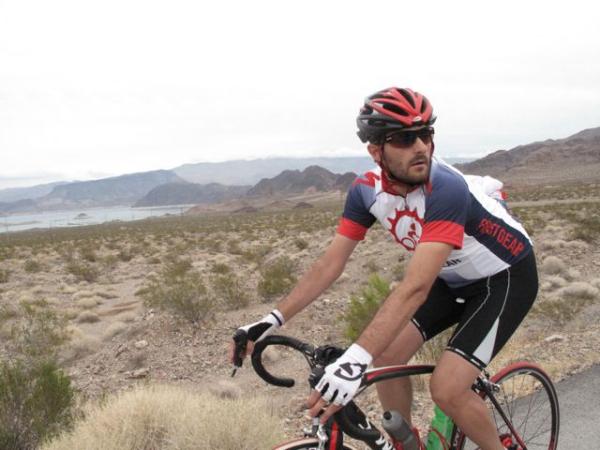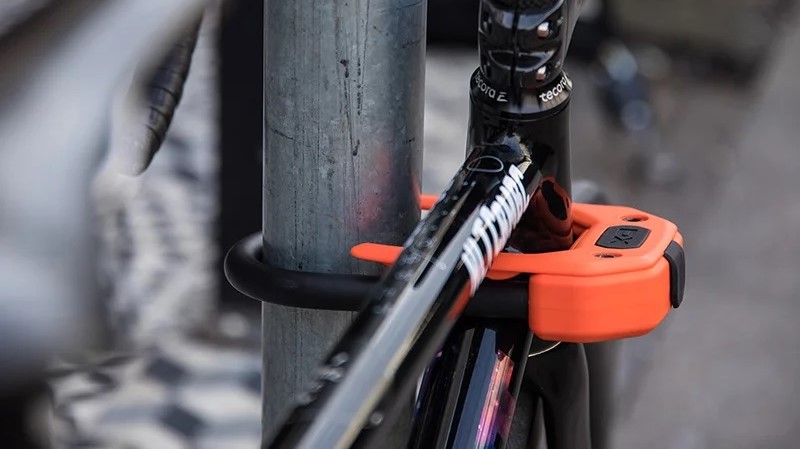8 conclusions from Opening Weekend
Dissecting the main talking points from the first Classics of 2021
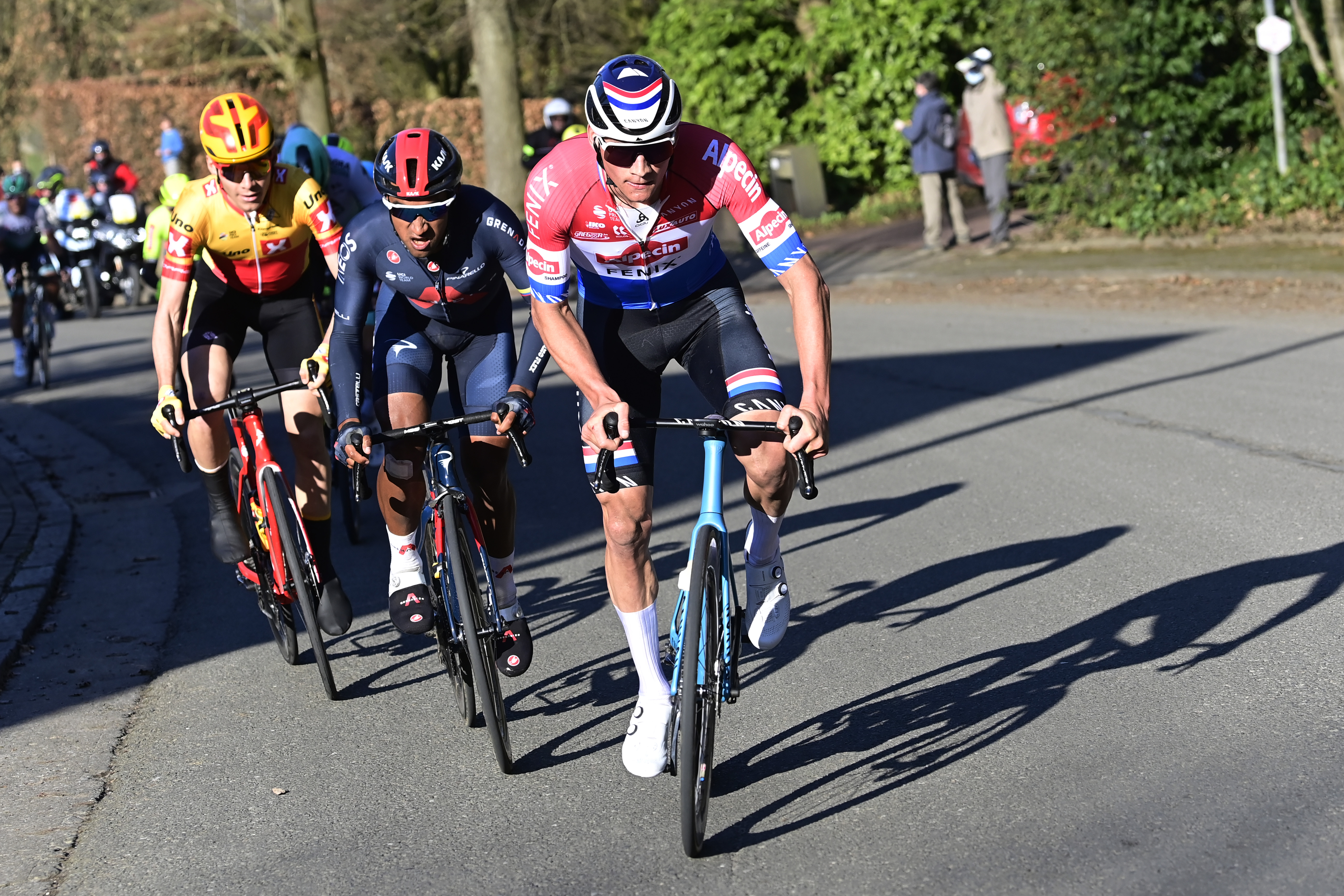
At the weekend, Omloop Het Nieuwsblad and Kuurne-Brussel-Kuurne combined to give us a first taste of the Classics in 2021.
Davide Ballerini (Deceuninck-QuickStep) won the Omloop in an uncommon bunch sprint, after his teammate, the world champion Julian Alaphilippe, had launched a long-range solo attack.
Mathieu van der Poel (Alpecin-Fenix) and Jhonatan Narváez (Ineos Grenadiers) launched an even longer-range attack at Kuurne, but that also came back for a sprint in the dying moments, with former world champion Mads Pedersen (Trek-Segafredo) adding to his growing palmarès.
Despite the fact both races ended with bunch sprints, there was no shortage of excitement, nor of talking points to dissect. Here, we take a look back over the first two races of the 2021 Classics season and pick out the most important conclusions from the weekend's races.
Pedersen’s patience
On the eve of the Opening Weekend, Mads Pedersen spoke to Cyclingnews about the need for patience and calm when it came to racing the Spring Classics, pointing out that what he described – and these are not our words – as ‘balls out’ did not necessarily win races. That view was never more evident than on Sunday when the strongest rider in the race, Mathieu van der Poel, launched an entertaining yet futile 80km attack, while Pedersen waited until the final 125m before showing himself at the front of the race. Luckily, with his balls not on show.
Pedersen has an affinity for canny race tactics. He won the world title in 2019 by picking the right move, and then demonstrated his ability to execute another style of victory with a win in Gent-Wevelgem last year. His victory in Kuurne was arguably his most audacious, and not least because he was nowhere near his best form.
Coincidently, he was on Van der Poel’s wheel when the Dutch rider attacked but instead of being drawn into a battle he had no chance of winning, the Dane wisely eased off the gas, and then allowed the race to come back to him. Considering at one point he found himself in the third group on the road, that took considerable patience. This had shades of Nick Nuyens in the 2011 Tour of Flanders written all over it.
The latest race content, interviews, features, reviews and expert buying guides, direct to your inbox!
Jasper Stuyven deserves credit for his selfless ride and perfect lead-out, but it’s Pedersen who rescued Trek’s Opening Weekend with a performance that no only adds to his aura of being a Classics superstar but also demonstrates that having the legs means nothing if you can’t back it up with a strong mental game too. Every time someone tells you that Wout Van Aert or Van der Poel are leagues ahead of the competition, just remind them that it's Pedersen who has a road world title and, what's more, he's the youngest of the trio.
QuickStep’s depth on show in Omloop
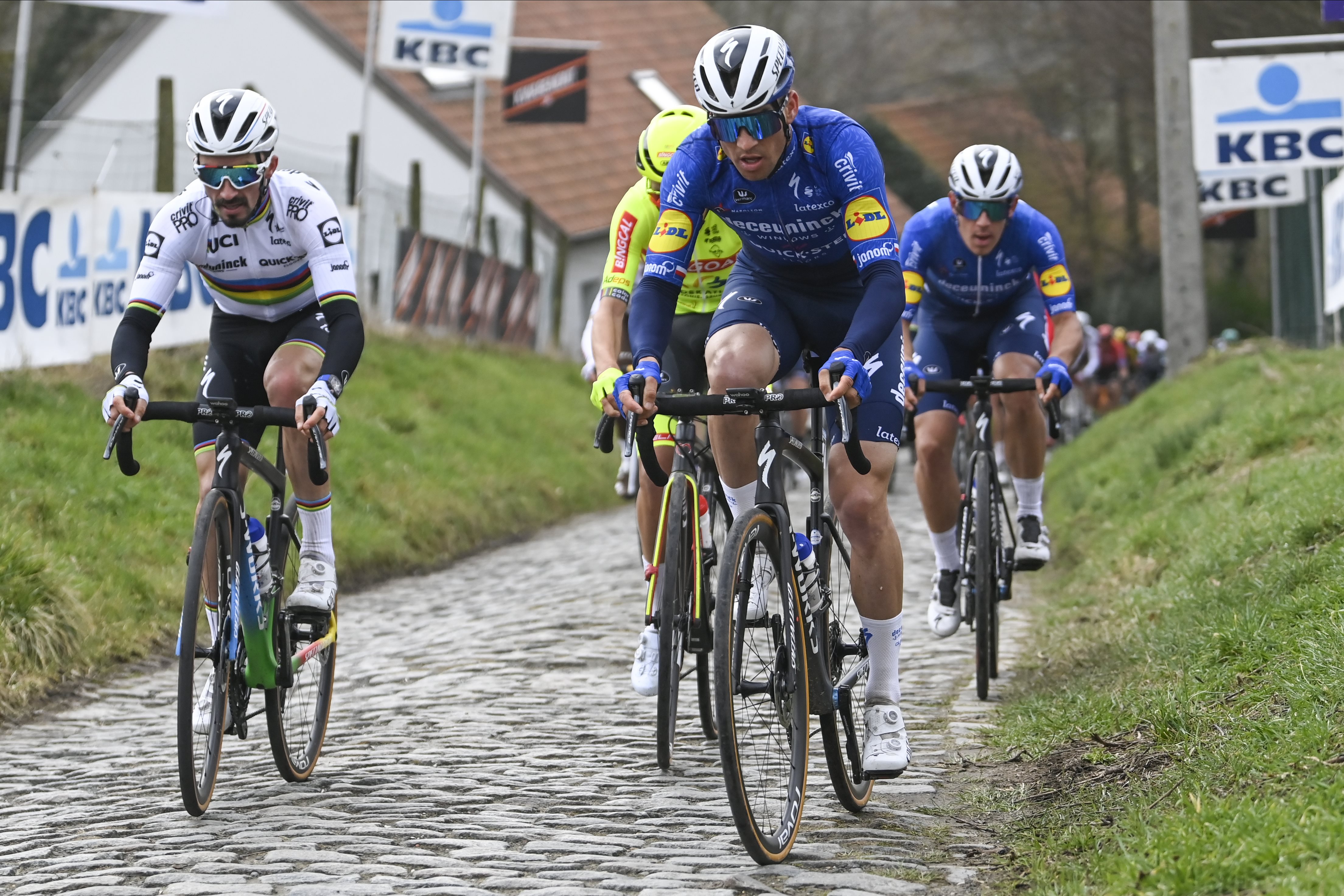
While Van Aert and Van der Poel were both missing from Omloop, the race provided a perfect reminder of the depth within Patrick Lefevere’s team. They were everywhere, and while teams looked fortunate to have ones or twos at decisive moments, Deceuninck-QuickStep always seemed to have reinforcements to burn.
They could even afford to see Zdenek Štybar and Yves Lampaert crash and yet still turn the race in their favour and close out the win with Davide Ballerini. Of course, it helps when a rider of the caliber of Julian Alaphilippe can cover so many bases, when Tim Declerq can ride on the front of a race for over 100km, and when Kasper Asgreen can pull off a powerful and tactically astute lead out, but it’s their ability to adapt that serves them so well.
Other teams will get stronger in the coming weeks, drafting in riders who either rested or raced in the Middle East, and both Van Aert and Peter Sagan cannot be discounted, but QuickStep remain the team to beat.
Van der Poel's greatest tests are ahead of him
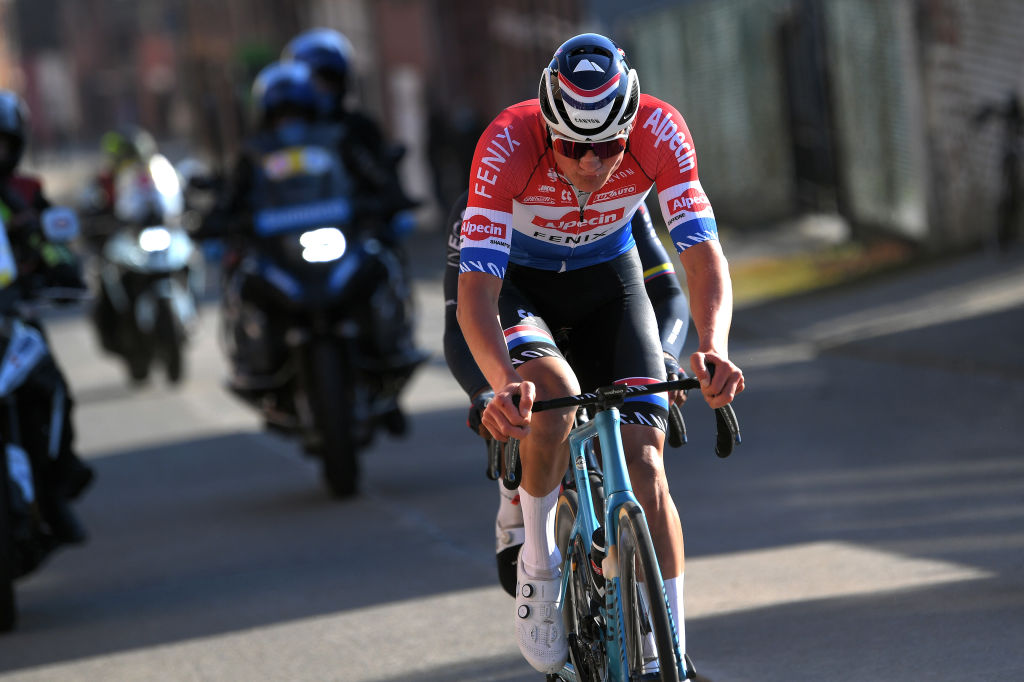
It’s not that hard to decipher that Van der Poel could have won Kuurne if he’d only opted for a slightly less gung-ho tactic. A long-distance sortie with over 80km left was always going to be an unlikely road to victory but the fact that the Dutchman came so close to achieving that objective is testament to the fact that he’s in stellar road form and that the disruption at the UAE Tour has in no way dented his condition.
Had Victor Campenaerts latched onto that long-range move and joined van der Poel and Narváez sooner, and had the remnants of the break just provided one more set of legs for the final 20km, then we could have ended the afternoon witnessing one of the most dominant displays since Fabian Cancellara’s jaw-dropping 2011 display at E3.
Instead, van der Poel was both applauded for his bravado and criticized for his tactics. Both opinions are not mutually exclusive. One can appreciate a rider rolling the dice and making a race exciting, while at the same time questioning the likelihood of success.
Van der Poel is good enough and flamboyant enough on a bike to get away with almost anything but bigger tests lie ahead with Strade Bianche and Milan-San Remo on the horizon. These are the races in which he will ultimately be judged.
Ineos’ new wave
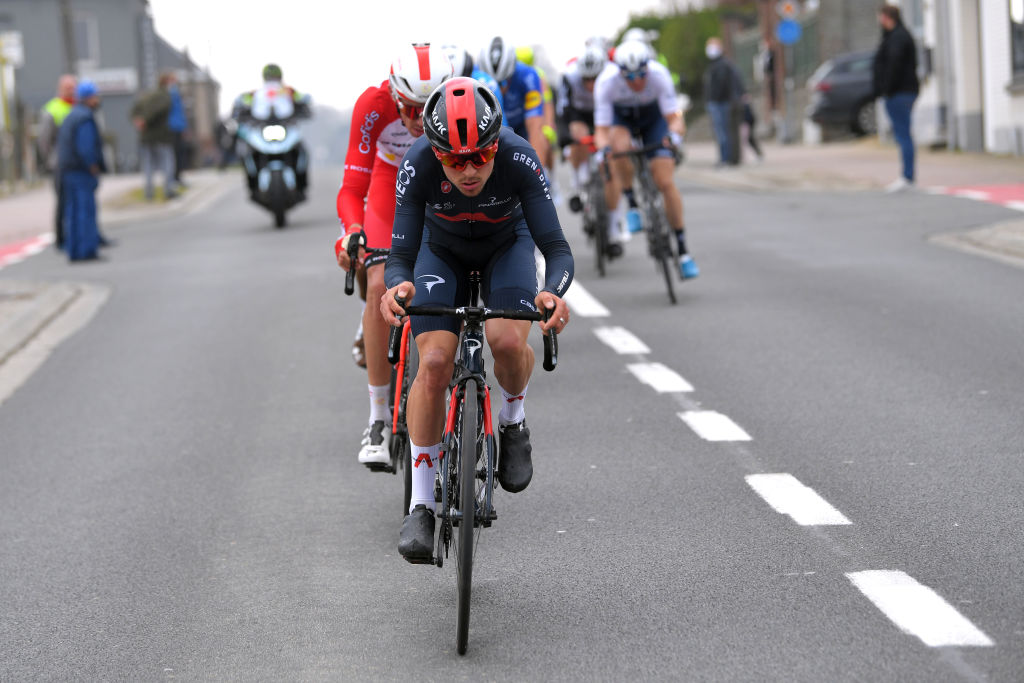
No one would dispute that, with such a determined focus on stage racing, and in particular the Tour de France, the cobbled Classics have always sat low on the team's objectives. There have been rare moments of success along the way, but in the Monuments of Paris-Roubaix and Flanders, the team have failed to pull off a win, while a lack of consistency has always been an issue throughout their spring campaigns.
Part of the problem is that they’ve never used their deep pockets to recruit a proven cobbled Classic winner but there are signs that their commitment to youth might be about to pay off.
Michal Gołaś (36) aside, their oldest riders in Kuurne were Leonardo Basso and Owain Doull, both of whom are just 27. Tom Pidcock (21), Jhonatan Narváez (23), Ethan Hayter (22), and Gianni Moscon (26) combined to create one of the youngest core of riders during Opening Weekend, and with Doull talking up the team’s newfound confidence in racing on the front foot, there were plenty of positives to take from both weekend outings.
Pidcock looks more like a road star with each passing race, but Narvaez is proving to be an ever-improving athlete too. He not only attacked with Van der Poel in Kuurne but survived until the bitter end, while Hayter would have featured in the sprint at Omloop had he not crashed. Moscon at least looks hungry again and with Luke Rowe and Dylan Van Baarle to come in, the squad looks both competitive and courageous.
At the moment they may not have a genuine threat who you’d bet on lasting 260-plus kilometers on the cobbles but Opening Weekend provided enough scope to suggest that they’re close. With Pidcock and Narváez, they have something to build around.
Trentin keeps knocking on the door
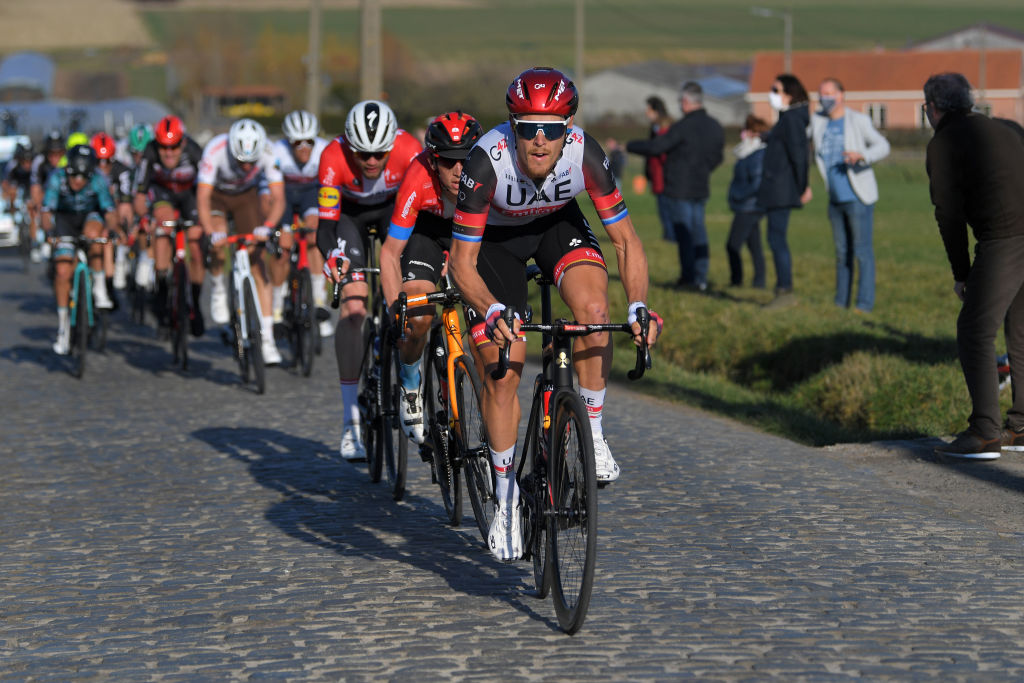
The Italian was clearly disappointed with his net return of two top 10s in the Opening Weekend, but Nils Politt was the only other rider to attain that level of consistency and the Bora-Hansgrohe rider didn’t threaten the podium or attack with any meaningful intent in either race. Trentin deserves recognition for his consistency at the very least.
That said, Trentin would gladly trade his placings for a podium or a win, and these races suit him more than Flanders and Roubaix, but he can take credit for how he rode. He was aggressive in both races, especially Kuurne, and despite a lack of team support and the lack of time he had to refocus after losing Alexander Kristoff in Omloop, the signs are that the Italian has settled in well at UAE Team Emirates.
He can look at the Opening Weekend as two opportunities lost or indications that he’s in good form and that, with slightly better luck, a top result is around the corner. There are still question marks over his durability in races like the Tour of Flanders and Roubaix – he's never been higher than 13th in either – but that still leaves the 31-year-old with plenty of scope in other races.
New kids on the block
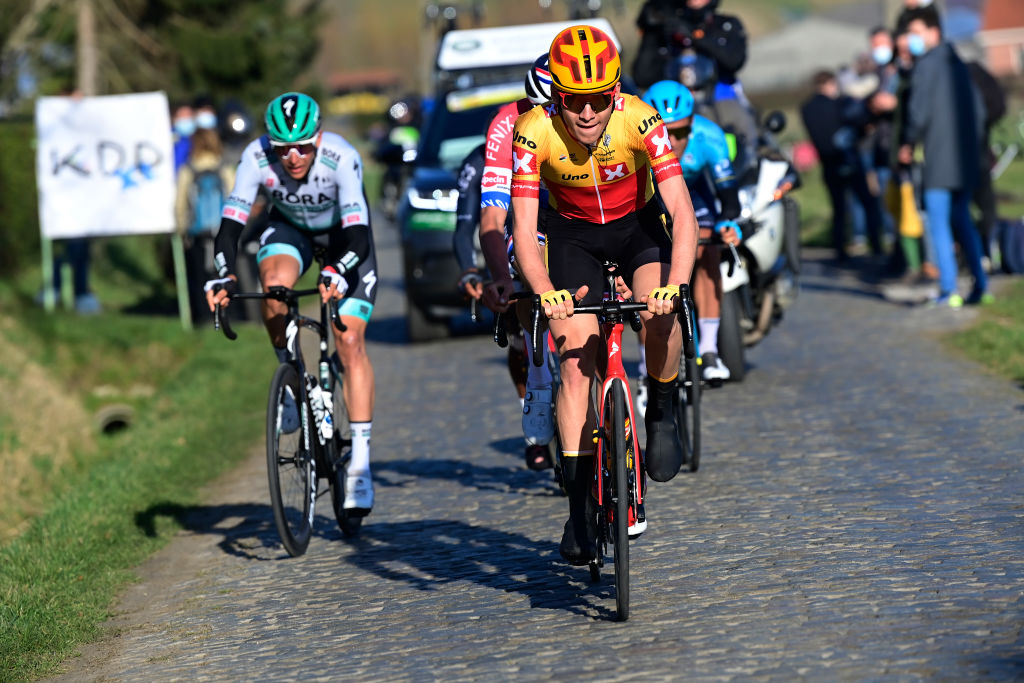
One of the most exciting aspects of any Classics season is seeing the new riders coming through. Seeing well-established stars strut their stuff on the cobbles is all well and good but finding new talent and seeing how far it can go in an unfamiliar setting can be just as enjoyable for a cycling fan.
Hence why seeing the likes of Jake Stewart, Kevin Geniets, Tom Pidcock, Tom Paquot, and especially Jonas Iversby Hvideberg ride with such confidence and maturity was so pleasing.
The latter arguably deserves the most praise. He didn't finish on a podium like Pidcock but, at 22, he demonstrated both his class and his improvement since last year's Kuurne debut. Not only did he infiltrate the main break, but he was also the first – and at one stage only – rider able to go with Narváez and Van der Poel when they accelerated.
Once the final five-man group formed, Hvideberg, the U23 European road champion, never skipped a turn and even managed to hang on for an 18th place that really didn’t do his ride justice. Out of contract at Uno-X at the end of this season, there will be no shortage of WorldTour teams looking at him.
Haussler's renaissance
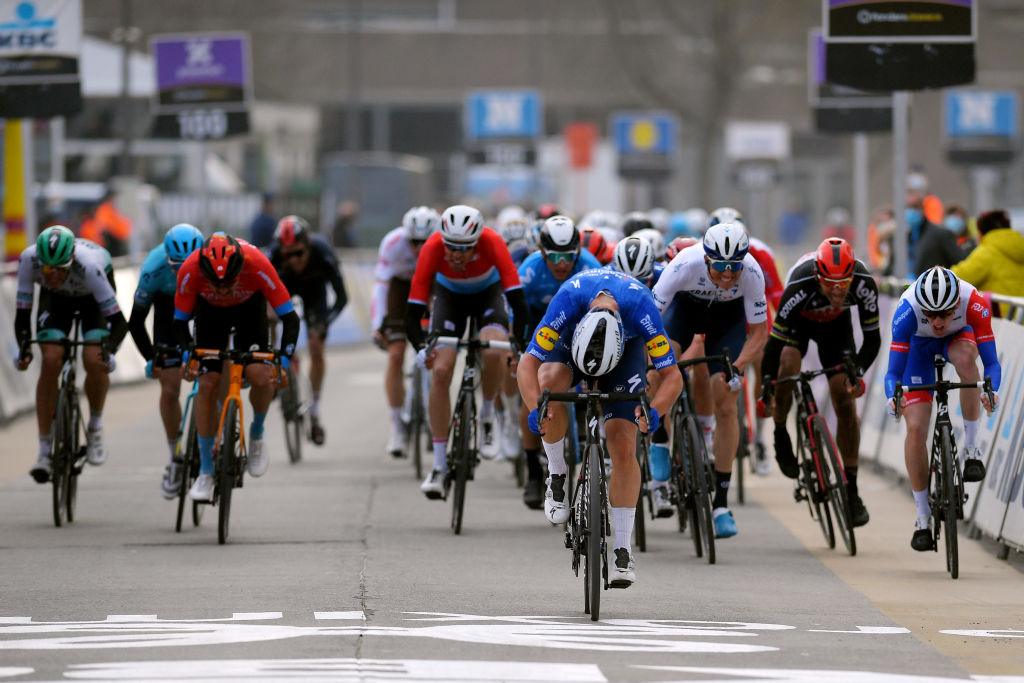
Bahrain Victorious didn’t come away with the results that they were hoping for from Opening Weekend but there were several positives to be drawn from the back-to-back races in Belgium. First and foremost, they rode well as a unit, with Marco Haller, Dylan Teuns, and Sonny Colbrelli all providing welcome cameos. However, their true star was undoubtedly Heinrich Haussler.
At 37, most riders would be forgiven for winding down their careers but Haussler isn’t your typical pro. When others were either sheltering on the home trainer during the winter or seeking warmer climates in Spain, the Australian packed his bike and threw himself into the world of elite cyclo-cross racing.
For some, such a move would dent their egos – especially if the results weren’t forthcoming – but Haussler raced with all the enthusiasm of a first-year pro, through sand and the mud. He never complained, never turned back, and, judging by his Instagram stories, thoroughly enjoyed the experience.
So seeing him roll back the years and sprint to fourth in Omloop and then play a key role in the final of Kuurne was hugely heartwarming for fans who have followed his career since the Gerolsteiner days. Long may the Indian summer of Haussler’s career continue.
Turgis continues to rise
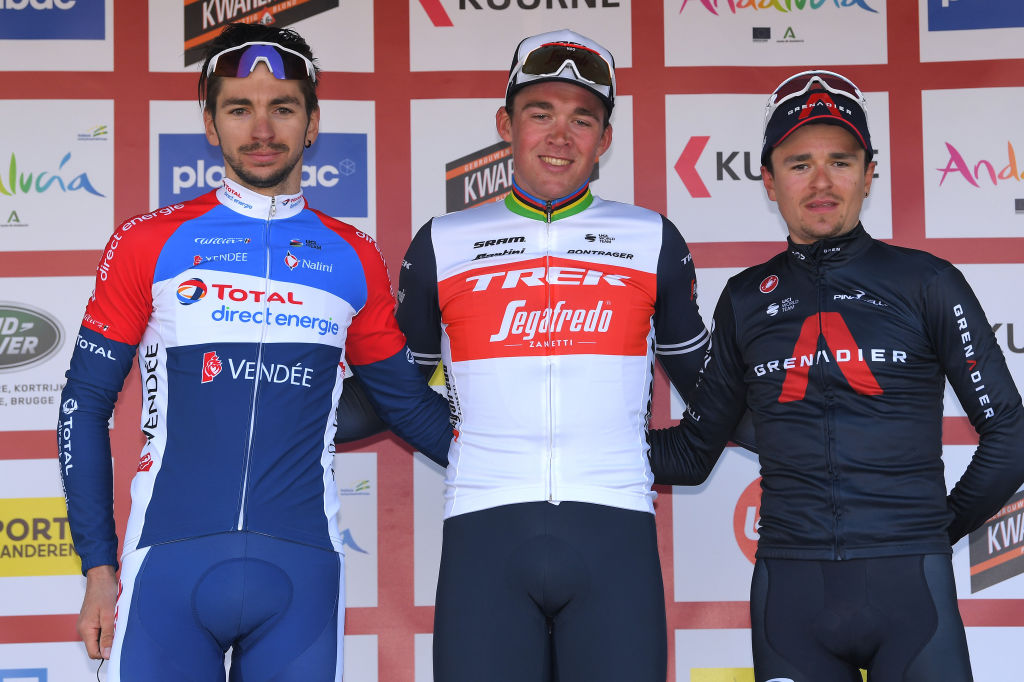
Team Total Direct Énergie have signed some major firepower in the last few seasons, with Niki Terpstra, Edvald Boasson Hagen, and Pierre Latour all recruited but just below some of the headliners sits Turgis, who, at 26, is fast becoming a recognized Classics contender in his own right.
He won Liège-Bastogne-Liège as a U23 rider, beating the likes of Dylan Teuns, Tao Geoghegan Hart, and Tiesj Benoot in the process, and, despite some promising results at Cofidis, his career only really started to blossom during his final season with Cedric Vassuer's team.
Since moving to Total Direct Energie, the Frenchman has finished fourth in the Tour of Flanders and second in Kuurne, and while a win is still missing in his new team colours, he looks like the squad's best hope of success this spring.
Daniel Benson was the Editor in Chief at Cyclingnews.com between 2008 and 2022. Based in the UK, he joined the Cyclingnews team in 2008 as the site's first UK-based Managing Editor. In that time, he reported on over a dozen editions of the Tour de France, several World Championships, the Tour Down Under, Spring Classics, and the London 2012 Olympic Games. With the help of the excellent editorial team, he ran the coverage on Cyclingnews and has interviewed leading figures in the sport including UCI Presidents and Tour de France winners.
